If you’ve spent time on Martha’s Vineyard, you’ve probably noticed oysters on almost every menu. This delicious and salty delicacy has grown in popularity in recent years, but oysters have been around on the island for a long time. Did you know that most of the oysters you enjoy on Martha’s Vineyard are raised on oyster farms?
Oyster farming on the island was originally started to help fishermen who were challenged by depleted fish and shellfish populations. In 1995, The Martha’s Vineyard Shellfish Group launched the MV Public Aquaculture Initiative, whose mission was to help struggling fishermen make a living on the water. There were four people awarded leases to try to grow oysters, and one of these farmers, Jack Blake of Sweet Neck Oysters, still has his farm in Katama Bay today.
Oyster Farming on Martha’s Vineyard – How it Began
Once these original farmers showed signs of success, others joined in and soon all of the available leases in Katama Bay were being used to grow oysters. In addition to farmed oysters, the island has oysters that grow naturally in the wild. However, as the wild population is insufficient in most island ponds, oyster farming helps to take the pressure off the wild stock.
So what does oyster farming look like on Martha’s Vineyard? Oyster farmers lease a section of the ocean from the town, and farms on the island are 1 to 4 acres in size. All island farms use a similar method of farming, where oysters are grown in cages that rest on the bottom of the ocean floor. These cages are attached to rope, which is attached to a buoy that appears on the surface. If you fly over the farms in Katama Bay you will see thousands of these floating buoys, each attached to a cage with over 1,000 oysters in it.
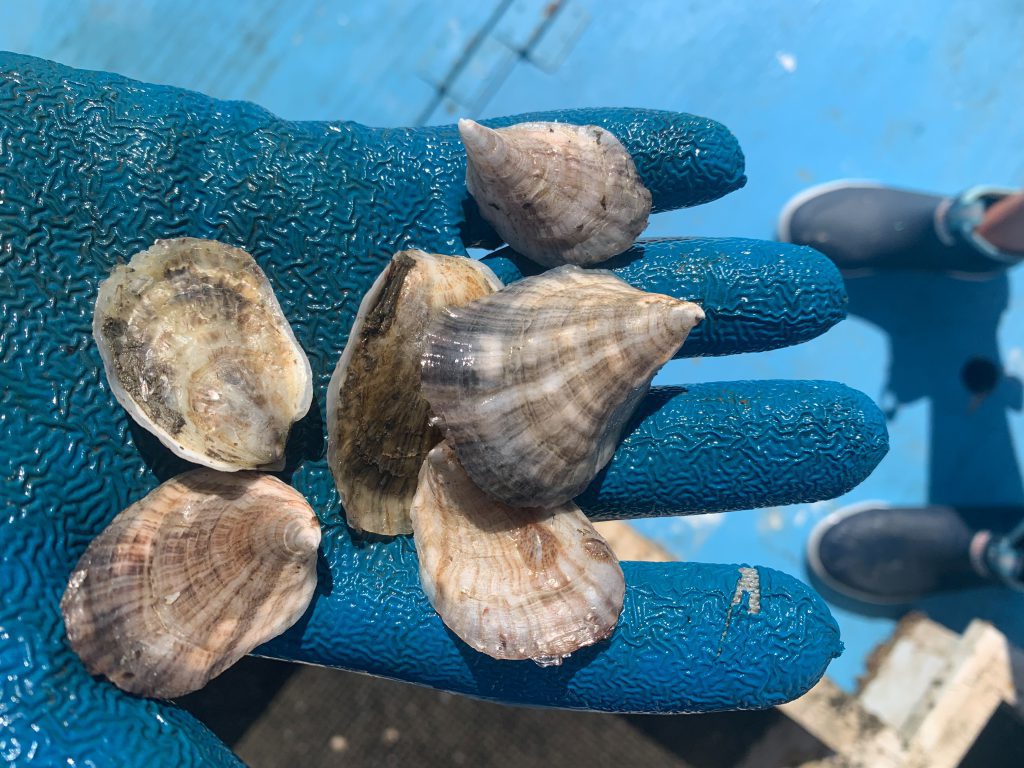
Oyster Farming on Martha’s Vineyard – The Seasons
Just like most everything on the island, oyster farming is seasonal. However, this season is controlled by more than just the influx of tourists; it’s also affected by the ocean and the natural life cycle of the oyster. Not only does the nature of the farming change by the season, but the flavor of the oyster does too. Oysters are similar to wine in that they take on the flavor of where they are grown. The microorganisms in the water are responsible for the flavor of the oyster, and these fluctuate from season to season based on the water temperature and conditions.
As the cold weather rolls in and the algae die off, oysters go into hibernation over the winter. For this reason, along with challenging weather conditions, many farmers on the island do not harvest during these months. That doesn’t mean there is no work to be done; the winter is the perfect time for boat work, equipment upgrades, planning for the coming season, and much more. Oyster farming is still possible during the winter months, and there are a few hardy farmers on the island who harvest their products all year round. If you’re lucky enough to try a Vineyard oyster in the winter, you might notice the oysters are extra sweet and delicious. This is because the oysters are at their fattiest, which is responsible for the sweet notes.
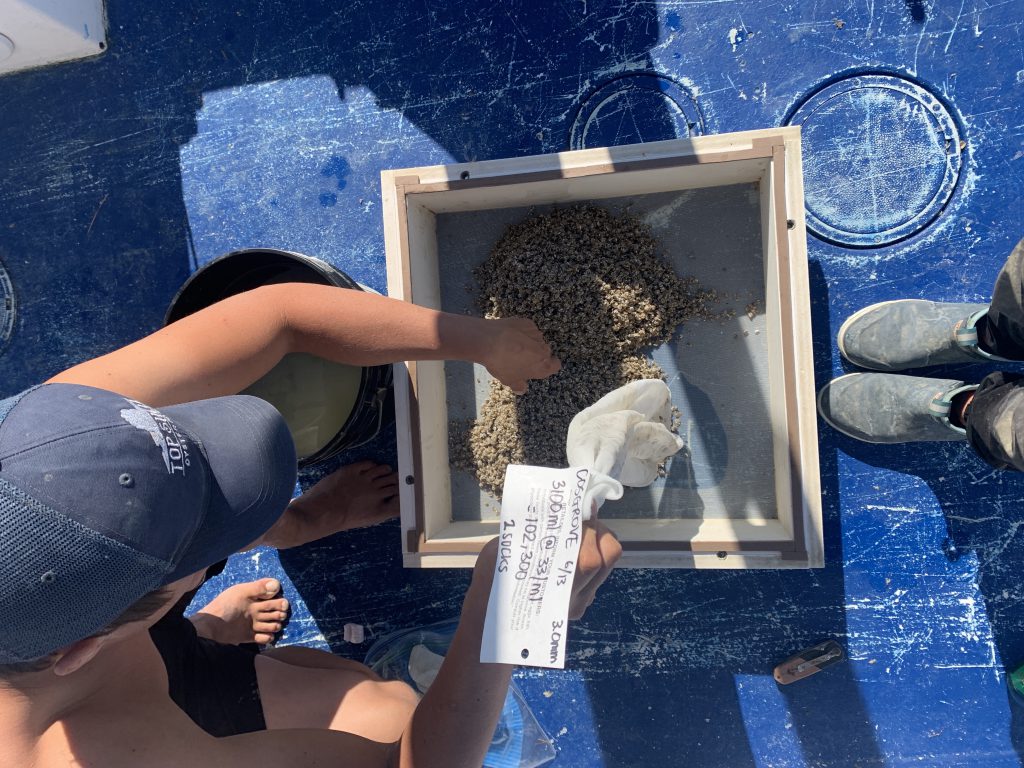
Oyster Farming on Martha’s Vineyard – The Seasons
As spring comes and the ocean warms, algae starts to grow, and the oysters come out of hibernation and start eating. This is when oyster farmers have to get back out on their farms, because the oysters start growing quickly! Spring oysters on the island are at their briniest saltiest flavor, and they’ve burned up all of their winter fat stores.
As the summer arrives, restaurants open up, and the market for oysters on the island booms. Farmers are busy at work on their farms, but what does this “work” look like? Summer is when the new oyster seed arrives. The baby oysters are as small as a grain of sand, and are placed in a floating nursery to grow and build their strength before they are moved into the farm cages. The cages filled with adult oysters need to be checked regularly, and the oysters are cleaned, tumbled to get the perfect shape, sorted by size, and put back into the cages with the right density to make sure they’re not too crowded. After the oyster has been on the farm for a few years, it is ready for harvest! The farmers sort the oysters and quickly put them on ice, before they are delivered to local restaurants, served up at a raw bar, enjoyed on a tour boat, picked up at the farmers market, or even shipped off the island.

Oyster Farming on Martha’s Vineyard – The Farms
Just as the season affects the taste of the oyster, so do the location and methods of the farm. With over 20 farms on the island, each has its own unique taste and shape. Edgartown is the most popular oyster farming town on Martha’s Vineyard and has the most established industry. The Katama Bay oyster name is recognized across the country, and Edgartown currently has 13 oyster farms; 12 in the bay and 1 in the open ocean. Oak Bluffs and Vineyard Haven are new to the oyster scene, but there are some pretty amazing farms in these island towns already. The up-island farms are also fewer in number, but should not be missed when enjoying Vineyard oysters. Below is a list of some of our favorite oyster farms on Martha’s Vineyard!
Edgartown:
Sweet Neck: Owned and operated by local oyster legend Jack Blake, Sweet Neck is one of the original oyster farms on the island. Although he’s well known for a delicious oyster, he’s probably most well known for his advancements to the industry on the island and his willingness to teach and help all those who come after him. Currently, all 12 farms in Katama Bay utilize Jack’s design for the floating oyster nursery that he specifically designed for Martha’s Vineyard conditions. He was one of the first four farms to be allowed in Edgartown in 1995, and is still producing an amazing Katama Bay oyster 28 years later.
Honeysuckle Oyster Farm: Home to one of the most popular oysters on the island, Honeysuckle Oyster Farm has been in business since 2011. Owned by Nic Turner, a local whose family has been in the island fishing industry, the Honeysuckle oyster is highly sought after and can be found in most high-end restaurants on the Vineyard. Honeysuckle takes sustainable farming a step further with a farm powered by wind energy and recyclable packaging. These oysters are said to have a sweet and briny taste fit for their name!
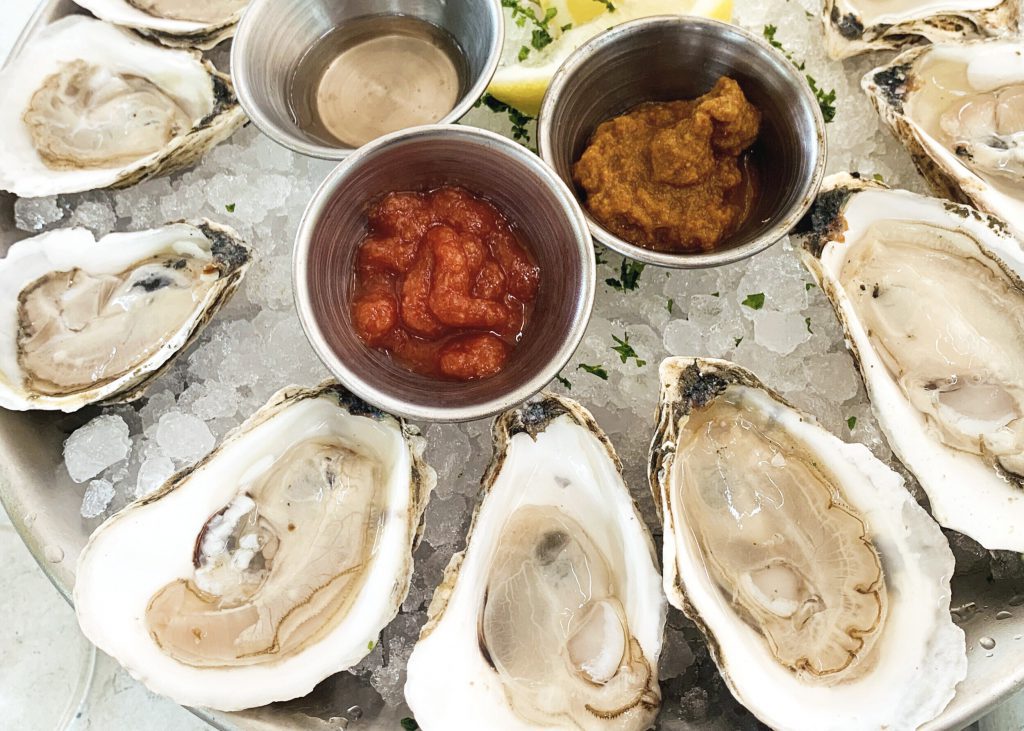
Oyster Farming on Martha’s Vineyard – The Edgartown Farms
Signature Oyster Farm: This is one of the largest oyster farms on the island, selling oysters year-round and delivering all over the country. Many of their oysters are shipped to Boston, and they can also be enjoyed here on the island. Signature is a family-owned and operated farm by Ryan and Julia Smith, and one of the two women-owned farms on the island. They offer tours of their farm in Katama Bay for up to 6 people, where you can learn about oyster farming and taste some of their amazing oysters for yourself!
Top Shell Oyster Farm: As the newest farm to Edgartown, this open ocean oyster farm is doing things a little different. Founded in 2021 by Liam Cosgrove and Maddie Henson, their farm lease was approved in the Nantucket Sound, 1.5 miles offshore. While their farm location provides some challenges in dealing with the weather, it offers exciting potential for the aquaculture industry by creating new spaces for oyster farms. Their oysters take on a different flavor than the Katama oysters because they are raised in an entirely different environment. Currently, their oysters can be enjoyed at the Port Hunter in Edgartown, and hopefully more restaurants in the near future as they grow!

Oyster Farming on Martha’s Vineyard – The Edgartown Farms
Spearpoint Oyster Farm: Started in 2010 by Jeremy Scheffer, this farm is one of the only farms on the island with two locations. These oysters are raised in Katama Bay and Menemsha Pond, which gives Spearpoint Oysters a diverse and delicious taste. Oyster farming was a natural career choice for Jeremy, who is a native of Martha’s Vineyard and is part of one of the original Vineyard fishing families. He spent his childhood days at his family-run seafood market and on the boat with his grandfather and now grows a great oyster!
Blue Moon Oyster Farm: Another original oyster farm and farmer, Scott Castro was a Vineyard Fisherman turned aquaculturist in 1995. He made the switch from fishing to oyster farming and now makes a living selling his delicious Blue Moon oysters.
Oyster Farming on Martha’s Vineyard – The Oak Bluffs Farms
Cottage City Oysters: This farm was started in 2014 by Dan and Greg Martino, two brothers with a unique idea. It took them over 3 years of work to be approved for the first-ever oyster farm in Oak Bluffs, and the first open-ocean oyster farm in New England. Since their formation, these brothers have been taking huge steps for the aquaculture industry. With a part of their farm dedicated to research with notable partners, and the addition of seaweed and scallops to their farm to accomplish a 3-D farming system, they are pushing boundaries left and right. They offer a popular raw bar service and an oyster farm tour that should not be missed on their 31’ boat. You can learn more about their oyster farm tour on our Martha’s Vineyard Bucket List blog post when we experienced the adventure first-hand in 2017. Their oysters can be purchased at the island’s farmers market, enjoyed from their tour boat, found in select restaurants around the island, and shipped anywhere in the country!
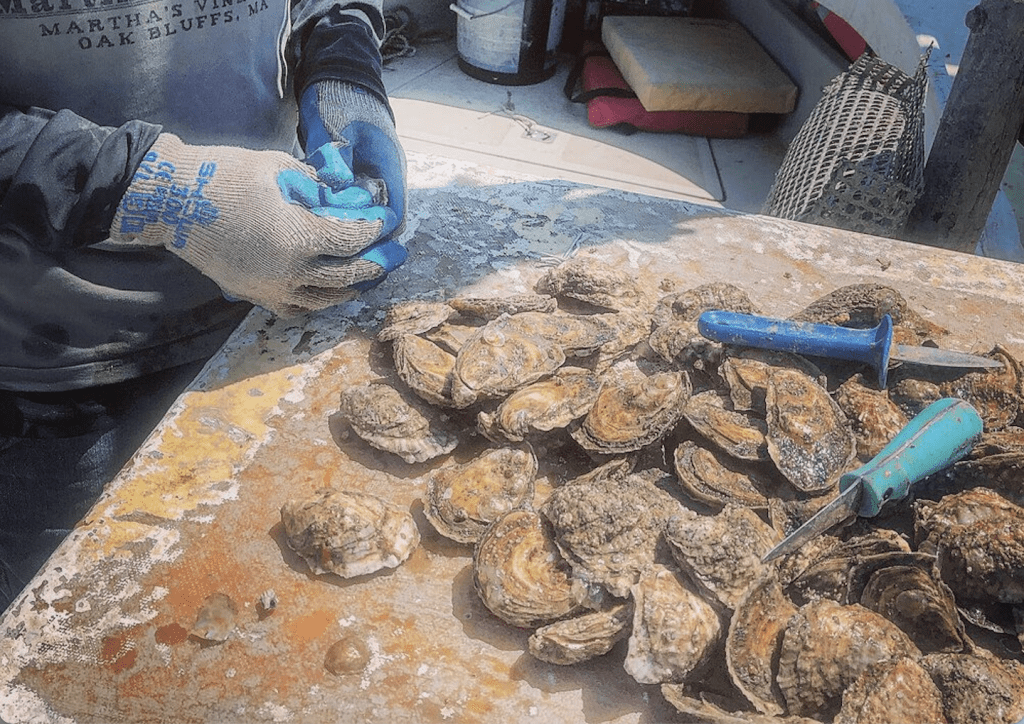
Oyster Farming on Martha’s Vineyard – The Vineyard Haven Farms
Tisbury Oyster Co: Vineyard Haven is also new to the aquaculture industry, and Tisbury Oyster Co is the first on the scene. Founded by Noah Mayrand in 2022, this farm is growing oysters and scallops in the Lagoon Pond. His oysters aren’t quite ready yet, but we’re super excited to try them as soon as they’re available!
Husselton Head Oysters: Started at the same time as Tisbury Oyster Co, this farm was one of the first farms in Vineyard Haven and is also growing oysters and scallops. Father and son duo Jeff and Tony Canha had their first harvest after just one year of farming, and their oysters were sold to the Net Result. Look out to see where their oysters and scallops will be available this summer!
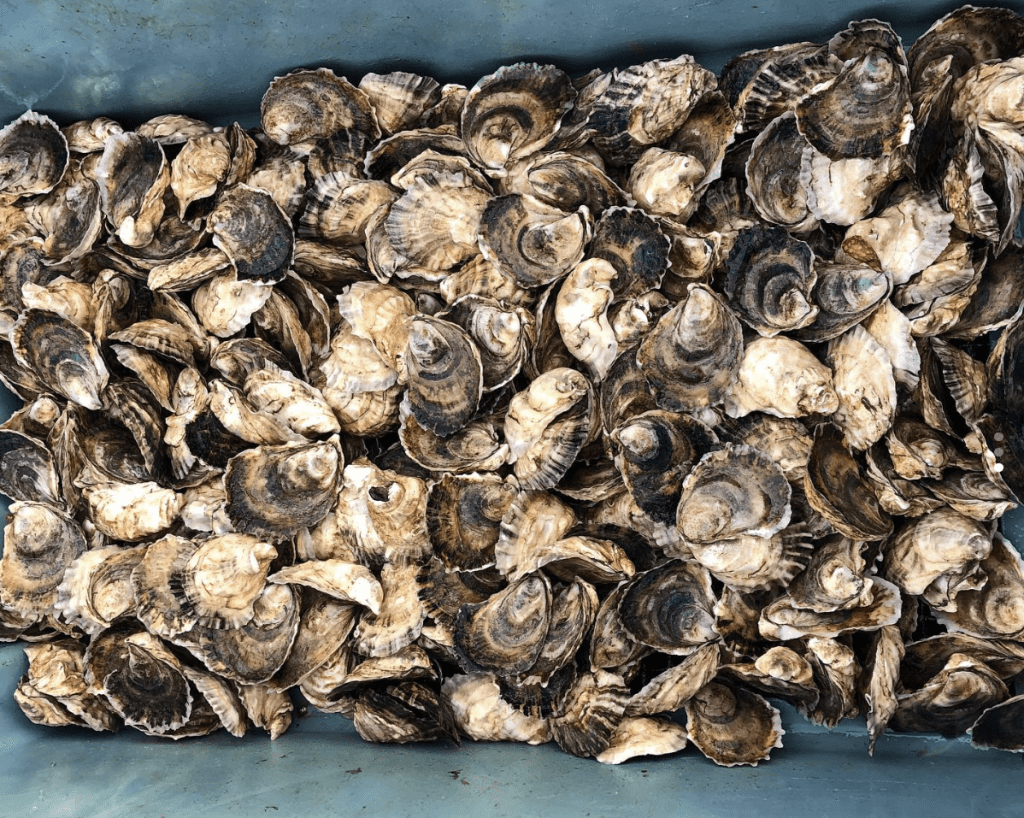
Chilmark
Menemsha Creek Oysters: As one of the only oysters grown in Menemsha Pond, these oysters are a unique and enjoyable addition to the list. This farm is owned by cousins Eric and Matt Mayhew, another original island commercial fishing family. Now the cousins get to raise oysters in the water they grew up on! Find them at select island restaurants.
We hope this deep dive into Martha’s Vineyard oyster farming has helped inspire you to try more of our local shellfish and deepened your appreciation for the hardworking men and women that make these beautiful and briny bivalves happen!





